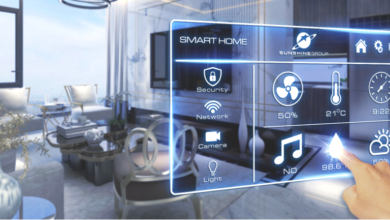What is Software Tethering in IoT: Can It Be Stopped?
Software tethering is a new trend that is rapidly spreading. Can customers do something about it?

There are a lot of worthless smart devices in modern homes. Whether they stop getting upgrades or a paywall blocks their features, they are essentially worthless.
Software tethering is a new trend that is rapidly spreading. Can customers do something about it?
What Is Software Tethering?
Software tethering is a new term for when a product’s maker uses the software-server connection to let users handle the product after the sale.
Devices that are linked to the internet are always online and can be reached by the server. This means that companies can push software or firmware updates at any time.
At first glance, software linking seems like it would be good for customers. They would want an easy way to get the newest features and security patches, after all.
The truth is not like that. More and more, manufacturers are using this link to make technologies that depend on software harder to get and use.
A bunch of consumer rights groups, like Consumer Reports and the US Public Interest Research Group, wrote an open letter to the U.S. Federal Trade Commission (FTC) in September 2024 saying they didn’t like tethered software. They said that the regulatory body should give either formal or informal advice on the subject.
People who sell things often don’t think much about how useful their goods are after the sale. One study found that half of sellers don’t keep track of how strong their ties with customers are.
In other words, they don’t care what people think about them after the deal is done. This is a huge problem for how long smart gadgets will be supported.
Why Is Tethered Software Bad?
The Internet of Things (IoT) is a group of real devices that are linked together and have software built in. Even if the devices aren’t sending or receiving data, they all need to be online so the server can talk to them.
This is the only way it can get important changes with new features and security patches.
Technology that is linked to the internet can sometimes be completely useless if it is not online. This makes customers stay connected to the company that made the product, which changes what it means to own a product.
Now, the company that gave them the device can take away its features, brick it remotely, charge a fee for use, or stop people from selling it again.
At the moment, there is no law that says a company can’t make a smart toothbrush, thermostat, TV, coffee maker, or fitness tracker useless.
They could stop it just a few months after it came out. When security patches stop, people may lose a lot of money and be open to hacking.
The loss of electronics is also a problem. The UN Institute for Training and Research says that 62 million metric tons, which is 82% more than in 2010, were created, which is a record. The institute thinks it will go up by another 32% by 2030, reaching 72 million metric tons. Manufacturers will add to this sum if they don’t have a strict support timeline they have to follow.
Also Read: Top 10 Web Development Companies in USA
Examples of Software Tethering
A number of well-known cases of software tethering have caused controversy in the consumer tech world.
Happiest Baby Takes Away Features
In June 2024, The Happiest Baby, a company that makes electronics for parents, put many of the Snoo Smart Sleeper’s features behind a $19.99-a-month membership.
People were furious when the features they paid $1,695 for in their smart cot disappeared all of a sudden. Executive Officer (CEO) of the company Harvey Karp said that adding the subscription fee would make the Snoo “even more accessible.”
Spotify Bricks the Car Thing
If you want to play music wirelessly via Bluetooth, Spotify made the Car Thing available to everyone in February 2022. It said in May 2024 that it would brick the device by the end of the year.
At first, it didn’t make it clear that returns were available. Even though Spotify quietly put the source code on GitHub so that anyone can use, change, or share it for free, the device still won’t work right until they release the software that lets it connect to phones.
HP Bans Third-Party Printer Ink
Customers can’t use ink from other companies with HP printers because of a feature called “dynamic security.” This means they have to buy HP goods to use their printers. It began with a firmware change in 2016.
Users could no longer use third-party ink refills overnight. A company representative says it’s to “protect” the customer experience, but some say the company is intentionally stopping people from getting better deals.
Peloton Charges a Reactivation Fee
Peloton, a company that makes connected exercise equipment, said in August 2024 that it would charge $95 to activate used hardware for the first time.
Peloton’s interim co-CEO, Christopher Bruzzo, said it will be a “source of incremental revenue” for the business. In the end, they don’t have to pay to make or ship items that are then sold on resale markets. They’ll make a lot of money from the charge.
Does Anything Exist to Fix It?
Consumer protection groups are pleading with regulatory bodies like the U.S. FTC’s Bureau of Consumer Protection to do something, but the law is not keeping up with changes in technology.
On the other hand, private companies also need to be open. A lot of them don’t say exactly when service for their smart products will end.
Regulatory bodies have ignored this problem for years, thinking that people who buy internet-connected devices were aware of the risks of engaging in a technology that wasn’t widely known.
It is thought that 152,200 IoT gadgets will connect to the internet every minute by 2025. That is, it is no longer a fringe topic.
In November 2024, the U.S. FTC looked into how long software support promises last. This was just a few months after consumer groups sent the open letter about software tethering.
It found that 89 percent of companies don’t say how long updates will be available for their goods, which may be against the Magnuson Moss Warranty Act.
This report looks good. It proves that the government is really interested in software linking.
But it is hard to say if it will do anything else, especially since the government is changing. It could be months or even years before customers see the results of policymakers’ work, even if they decide to do something.
People can be heard as consumers
Manufacturers may say that software tethering makes their services more accessible or better, but most of the time, what they’re really doing is just what they need to do to make money.
To make their opinion known, consumers can teach others about the issue and stay away from companies that aren’t clear about their support plans.











